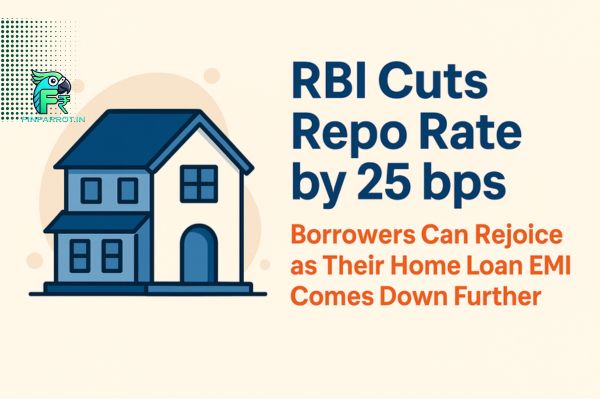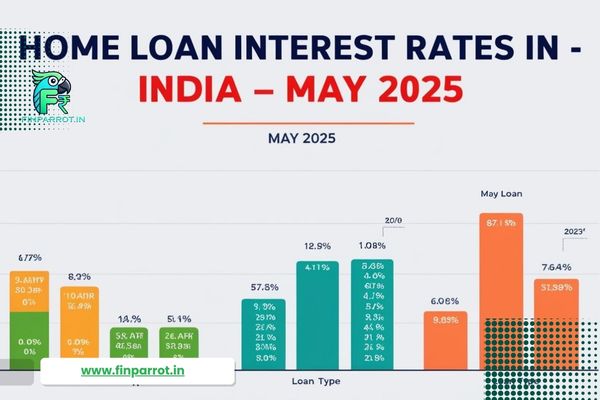Introduction
Borrowing money is a significant commitment, so being prepared is wise. Figuring out your monthly loan payment (your EMI) upfront is key to smart budgeting. Whether you’re looking at a home, personal, or car loan, understanding how EMIs work can prevent future financial stress.
An EMI calculator is a handy tool that gives you a rough idea of your monthly payment. Just plug in the loan amount, interest rate, and how long you’ll pay it back. But how exactly is that EMI number calculated? What influences it? And what can you do to lower your monthly payments? This guide will walk you through everything you need to know how EMI Calculator works for your Loan Repayments.
What is EMI and Why Does It Matter?
EMI (Equated Monthly Installment) is the fixed monthly amount you pay the lender to repay your loan. Each EMI includes two components:
- Principal – The actual loan amount borrowed.
- Interest – The cost of borrowing money charged by the lender.
EMIs allow you to spread your repayment over time, making loans more manageable. However, the longer the tenure, the higher the total interest you pay.
How is EMI Calculated?
EMI is calculated using the following formula:
EMI=P×r×(1+r)n(1+r)n−1EMI = \frac{P \times r \times (1 + r)^n}{(1 + r)^n – 1}Where:
- P = Loan amount
- r = Monthly interest rate (Annual Rate ÷ 12 ÷ 100)
- n = Loan tenure in months
Example Calculation: Click EMI Calculator
Suppose you take a ₹10 lakh personal loan at a 10% annual interest rate for 5 years (60 months).
- Monthly interest rate = 10% ÷ 12 = 0.8333% (or 0.008333 in decimal form)
- EMI = ₹21,247 per month
Rather than calculating manually, you can use an online EMI calculator for quick and accurate results.
Factors Affecting Your EMI
Several factors influence how much EMI you’ll pay every month:
1. Loan Amount (Principal)
Higher loan amounts result in higher EMIs. If you borrow ₹5 lakh instead of ₹10 lakh, your EMI will be significantly lower.
2. Interest Rate
Interest rates vary based on the lender, credit score, and loan type. A lower interest rate means lower EMI payments.
3. Loan Tenure
A longer loan tenure reduces the EMI but increases the total interest paid over time—a shorter tenure results in higher EMIs but lower interest costs.
4. Type of Loan
Different loans (home, car, education, personal) have different interest rates and repayment structures, affecting your EMI amount.
5. Credit Score
A high CIBIL score (750+) improves your chances of getting a lower interest rate, reducing your EMI burden.
How to Reduce Your EMI Burden
1. Choose a Longer Tenure (But Be Careful!)
Opting for a longer repayment tenure lowers your EMI but increases the total interest paid.
2. Make a Higher Down Payment
Pay a larger amount upfront to reduce the principal, which lowers your EMI.
3. Prepay Your Loan Whenever Possible
Making partial prepayments reduces the outstanding loan balance, bringing down your EMI or shortening the loan tenure.
4. Compare Loan Offers Before Applying
Check multiple lenders and use an EMI calculator to find the best loan option with the lowest EMI.
5. Maintain a Good Credit Score
A high credit score qualifies you for lower interest rates, directly lowering your EMI payments.
How to Use an EMI Calculator?
Using an EMI calculator is simple:
- Enter the loan amount you wish to borrow.
- Input the interest rate offered by the lender.
- Select the loan tenure in months or years.
- Click “Calculate” to get the EMI amount.
You’ll also see a detailed amortization schedule showing how much interest and principal you pay each month.
Real-Life Loan Scenarios: How EMI Changes
Here’s how EMI varies for different loan amounts and tenures:
| Loan Amount | Interest% | Tenure (Year) | Month EMI |
| 500000 | 10 | 5 | 10624 |
| 1000000 | 10 | 5 | 21247 |
| 1000000 | 10 | 10 | 13215 |
Key Takeaways:
- Lower tenure means higher EMI but lower total interest paid.
- Extending tenure reduces EMI but increases the overall interest cost.
Common Mistakes to Avoid When Using an EMI Calculator
- Ignoring Additional Charges – Processing fees, insurance, and penalties impact the total loan cost.
- Not Checking Loan Terms – Some loans have strict prepayment rules, affecting flexibility.
- Overlooking Interest Type – Fixed vs. floating interest rates impact EMI calculations.
- Relying Only on EMI – A lower EMI doesn’t always mean a cheaper loan; always check the total interest paid.
FAQs?
Can I calculate home loan EMI for 30+ years?
Yes, home loan EMI calculators allow you to calculate EMI for up to 30 years, and some lenders even offer tenures of 35 to 40 years based on Age & eligibility.
Does prepayment affect my EMI or tenure?
If you make a prepayment, you can choose to either reduce your EMI while keeping the tenure the same or reduce the tenure while keeping the EMI the same. Reducing tenure helps save more on interest.
Final Thoughts:
Why You Should Always Use an EMI Calculator Before Taking a Loan
Taking a loan isn’t just about getting the funds—it’s about ensuring you can repay it without financial stress. The last thing you want to realize is How the EMI is utilized in your monthly budget.
An EMI calculator makes life easier by giving you a realistic picture of your repayments. You can adjust the loan amount, tenure, and interest rate to see what works best for you. It also helps you compare different loan options, saving you a lot of money in the long run.
So, before you take out a home loan, car loan, or personal loan, make some numbers for a few minutes or get advice from an expert or us.
Your future self will thank you for making a well-informed, stress-free decision!
Most Read Topics
LOAN ELIGIBILITY | HOW CHECK CIBIL SCORE | CIBIL SCORE IMPROVE GUIDE















